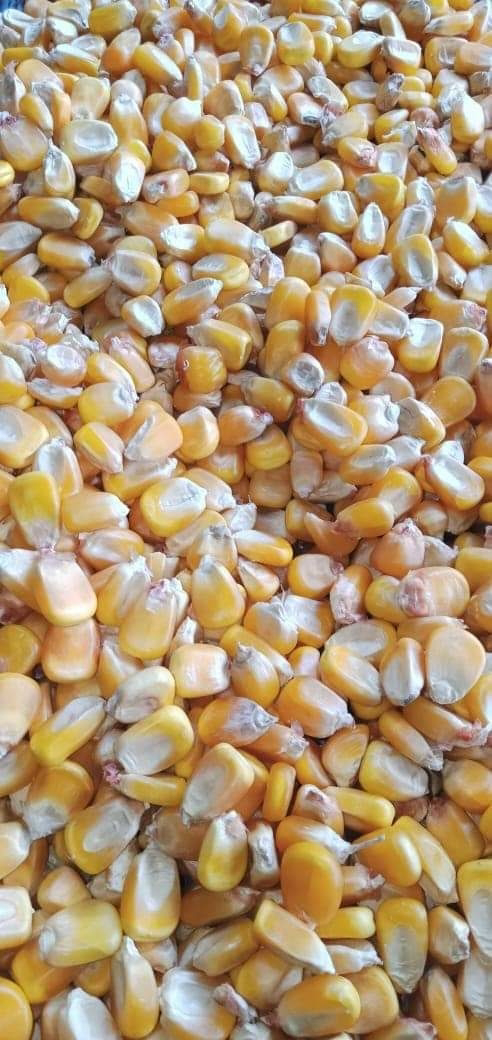What's in the chicken feed...??? Why Chicken Grow faster if we give compound feed? Why we get more egg if we give this ???
What's in the chicken feed...???
Why Chicken Grow faster if we give compound feed?
Why we get more egg if we give this ???
Poultry feeds are available in the market in various forms. Pre-starter, starter, and finisher fed to broiler chickens for full growth, Grover feed given to laying hens during growth and layer feed given for laying hens are the various types of feeds commonly available in the market in Kerala.
All types of feeds contain different amounts of protein and energy.
It is adjusted according to the needs of different types of chickens.
Maize is used to providing energy or the carbohydrate in poultry feed.
Maize is the main feed ingredient and maximum inclusion,
Up to 50-60% of the feed is maize. Rice, wheat, and barley are also used.
Depending on the market price, availability and digestibility, the quantity of these in the feed may change. Only about 10% use these, and 60% is maize itself.
Soybean meal is used in chicken feed to get protein.
Soybean meal contains 25-30% of the feed inclusion, and it contains more than 48% of protein.
Groundnut Cake and fish meal are also used for protein purposes.
Quantities vary according to market availability and price
Maximum 5%
Wheat bran, sorghum, and their oil are added in small quantities
5-10% Maximum.
Meat Bone meal, meat powder and other animal by-products are added in small quantities.
These should be used only after all bacteria have been destroyed
Maximum 3%.
Palm oil and other oils are added to enhance the fat content and flavor. Maximum 1%.
Also, poultry feed contains Vitamin Powders, Minerals, Vitamin A B Complex Amprolium medicine against Coccidia disease, Enzymes to Ease to enhance Digestion, Liver Tonics, and Toxin Binders to Destroy Toxins in Corn etc.
Addition of beneficial bacteria (probiotics) is now increasingly popular.
These inhibit the growth of pathogenic bacteria, which can significantly reduce the use of antibiotics.
Chickens cannot produce two amino acids, Lysine, and methionine, which add up to 3 kg per tonne.
Different types of feeds.
Pre starter...
Pre starter feed is given to very young chicks for rapid growth.
So the amount of protein in the starter is higher than the amount of energy.
Protein -22%
Energy -2900 kcal.
To produce this type of feed, 570 kg of maize and 350 kg of soybean per tonne are required
Add 30 kg of bone meal and 6 kg of Shellgrit to get calcium.
In addition to the other tonics, vitamins and liver powders mentioned above.
Starter...
Starter feed is also provided for accelerated growth. Of which 20% is a digestible protein (DCP)
It also contains 3000 kcal of energy.
To make feed in this way
600 kg of maize and 305 kg of soybean meal is added per tonne.
Also, meat bone meal, Dicalcium phosphate, vitamins and other tonics and probiotics
Shell grits and calcium powder are used for calcium availability.
Finisher feed ...
After 20 days, broiler chickens are fed for rapid growth.
The Finisher diet contains 19% digestible protein and 3100 kcal of energy.
630 kg of maize and 265 kg of soybean should be added to make this type of feed and the above mentioned ingredients.
Grower feed.
Contains 18% digestible protein and 2900 kcal of energy, this feed is not used for rapid growth.
About 650 kg of maize, 250 kg of soybean, and other ingredients are added per tonne to make Grower feed. Calcium is needed more than a finisher diet.
Layer feed.
It is fed from 4.5 months to the end. It is low in protein and low in energy. The goal is to maintain egg production.
Digestible protein contains 17 percent and 2700 kcal of energy. 650 kg of maize and 200 kg of soybean are added to make layer feed. As the requirement of calcium is high, up to 100 kg of Shell Grit is added per ton. Also adds calcium powders, DCP, other tonics, vitamins, and beneficial bacteria...
All that is said in this article is to understand what is in the feed . All of the above quantities are approximate.
Only an experienced veterinary Nutritionists can tailor the exact feed formula according to the market.
Those who want to make their own feed at home should prepare the formula with cheap and easily available ingredients.
The nearest veterinary hospital will help you with that.
This article describes the industrial feed production.
Dr. Abdul Rauf P.







Comments
Post a Comment